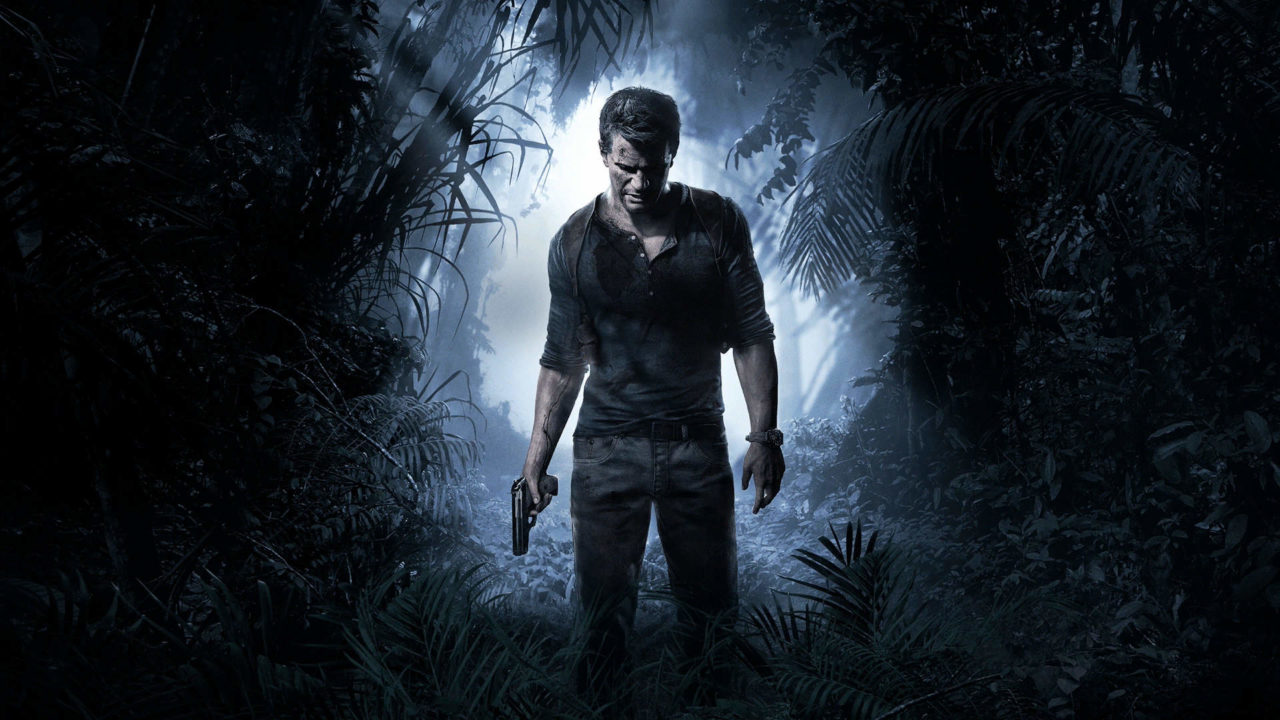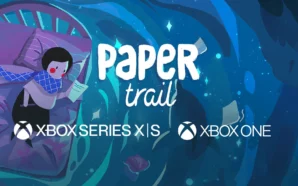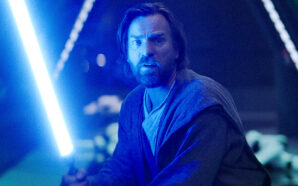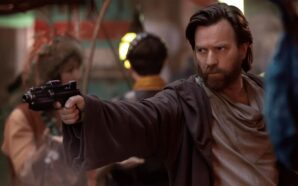Moving straight from Uncharted 3 to Uncharted 4, the truly insane level of innovation between the games is clear to behold. Technologically, A Thief’s End is in another league and it’s difficult to truly compare it against the earlier trilogy other than to say it’s gorgeous and plays wonderfully. But the narrative, aiming to be deeper, richer, and more serious than the previous games, can be dissected. Playing the game for the first time in years it became shockingly clear that Uncharted 4 was the first post-The Last of Us game for Naughty Dog and those lofty storytelling heights were transplanted into their premiere action franchise. But does it go too far? Is too much of the pulp adventure serial feel gone in Uncharted 4? With Drake’s Fortune, the franchise started with Naughty Dog not being confident enough in their storytelling but now the opposite may be true. Are they too sure of themselves and has some of the essence of the series been removed along with its simple throwback storytelling?
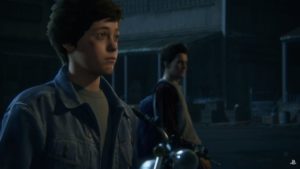 Uncharted 4 is a story without a clear beginning; its first hour or two is certainly the weakest part of the game. Instead of starting with Nate in the present, which may be an unexciting way to open a game considering his circumstances, we instead get an in medias res prologue in the style of Uncharted 2. It’s a good action beat but it was clearly included just to ensure gamers don’t get bored with the slow opening, and it spoils that Sam isn’t dead. Then the game switches between two flashback sequences of Young Nate in an orphanage and Slightly-Older-But-Still-Young Nate in a Panamanian prison. For a game with such strong narrative and thematic ideas as it progresses, the opening is strangely unfocused and fills in some vital backstory in a clumsy way, which is not an adjective I was expecting to use. Uncharted 4 is slow to get going and lacks the efficiency of storytelling of the previous games – the discussions between characters during gameplay now being long cutscenes.
Uncharted 4 is a story without a clear beginning; its first hour or two is certainly the weakest part of the game. Instead of starting with Nate in the present, which may be an unexciting way to open a game considering his circumstances, we instead get an in medias res prologue in the style of Uncharted 2. It’s a good action beat but it was clearly included just to ensure gamers don’t get bored with the slow opening, and it spoils that Sam isn’t dead. Then the game switches between two flashback sequences of Young Nate in an orphanage and Slightly-Older-But-Still-Young Nate in a Panamanian prison. For a game with such strong narrative and thematic ideas as it progresses, the opening is strangely unfocused and fills in some vital backstory in a clumsy way, which is not an adjective I was expecting to use. Uncharted 4 is slow to get going and lacks the efficiency of storytelling of the previous games – the discussions between characters during gameplay now being long cutscenes.
Returning to the Young Nate well could have been dangerous and offer diminishing returns. The magic that was the Young Nate sequence in Uncharted 3 could be lost and, while Uncharted 4’s flashbacks aren’t as potent in character insight or texture, they are still good yet, unsurprisingly, overlong. The flashbacks are used in a very similar way to how they were in the previous game, filling in the relationship backstory with Sam this time instead of Sully. But they also hit a narrative beat that is far too similar to that of Uncharted 3. Sam and Nate’s mother was looking into the pirates that will become the game’s focus, making the quest one of family heritage, something Nate has been trying to fulfil his whole life, just like in Uncharted 3. That card has already been played. The scenes of the brothers discussing their mother are done well and would make for a great emotional hook if it didn’t feel quite so repetitive.
 When the game finally catches up to Nate in the present day the worst is behind us and I love the reintroduction of the character. It toys with player’s expectations expertly as we guide Nate underwater on a dive. Surely it must be for treasure, just like the very first scene of Uncharted: Drake’s Fortune, right? Wrong. He’s a simple salvager and recovering a lost shipping container. The moment he breaks the surface and is revealed to be in a city river instead of the ocean is fantastic. Where once Nate in a wetsuit with a crowbar would be opening a sarcophagus, now it’s a box of copper wire, the treasure of the modern era. Throughout the scene we expect something to go wrong but it never does: his life is safe and boring. The game does an exceptional job of showing Nate’s rather dull life, and his subtle dismay at it, without it being dull for us to play. While his relationship with Elena is strong and he can play Crash Bandicoot whenever he wants (was it always that hard?), he longs for adventure.
When the game finally catches up to Nate in the present day the worst is behind us and I love the reintroduction of the character. It toys with player’s expectations expertly as we guide Nate underwater on a dive. Surely it must be for treasure, just like the very first scene of Uncharted: Drake’s Fortune, right? Wrong. He’s a simple salvager and recovering a lost shipping container. The moment he breaks the surface and is revealed to be in a city river instead of the ocean is fantastic. Where once Nate in a wetsuit with a crowbar would be opening a sarcophagus, now it’s a box of copper wire, the treasure of the modern era. Throughout the scene we expect something to go wrong but it never does: his life is safe and boring. The game does an exceptional job of showing Nate’s rather dull life, and his subtle dismay at it, without it being dull for us to play. While his relationship with Elena is strong and he can play Crash Bandicoot whenever he wants (was it always that hard?), he longs for adventure.
Bringing in a previously unmentioned brother is certainly a risky move for the fourth instalment of a franchise but Sam Drake is a character with a very clear narrative purpose which justifies his sudden appearance. Uncharted 4 is ultimately a story about greed and growth. Sam is the enabler to Nate’s obsession, pulling him back into his old life. Revisiting the games, I do think Sully should have died at the end of Uncharted 3 so Sam would be the only driving force in bringing Nate out of retirement. I enjoy Sully in the game but I think the themes would be cleaner is he was dead at this point. The writers could have made Sam and Sully contrasting mentors to Nate but that’s not explored enough to justify the inclusion of both, and Chloe could easily have filled Sully’s role, especially with Nate altering her outlook in Uncharted 2 and now she could return in the favour in 4.
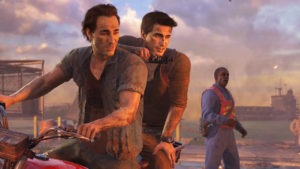 The one issue with Sam is that I don’t like him as much as I think I should. There’s a fine line between charming and annoying and he falls on the wrong side too often, and I’m distracted by how much younger Nate’s older brother sounds than him. But Sam serves his purpose in the story and its themes, not understanding how much Nate has changed and being consumed with greed. Comparisons with Nate and Sam are constantly made with historical figures throughout the game, whether it be the pirates Avery and Tew or the Penitent Thief and the ‘Jerk Thief’. The quest for the treasure propagates cyclical greed and Nathan is the one to break the cycle. In that way, the game feels like a forerunner for The Last of Us: Part 2, which dealt with the cycle of violence. These ideas are very well presented, deeper than those the series has dealt with before, and still central to Nate as a character. The title A Thief’s End may conjure thoughts of death but it is in fact about growth.
The one issue with Sam is that I don’t like him as much as I think I should. There’s a fine line between charming and annoying and he falls on the wrong side too often, and I’m distracted by how much younger Nate’s older brother sounds than him. But Sam serves his purpose in the story and its themes, not understanding how much Nate has changed and being consumed with greed. Comparisons with Nate and Sam are constantly made with historical figures throughout the game, whether it be the pirates Avery and Tew or the Penitent Thief and the ‘Jerk Thief’. The quest for the treasure propagates cyclical greed and Nathan is the one to break the cycle. In that way, the game feels like a forerunner for The Last of Us: Part 2, which dealt with the cycle of violence. These ideas are very well presented, deeper than those the series has dealt with before, and still central to Nate as a character. The title A Thief’s End may conjure thoughts of death but it is in fact about growth.
The villainous Rafe is also key to the themes of the game but, like Sam, isn’t the most engaging character. There’s an attempt at some social commentary with Rafe as the entitled rich trust fund kid wanting to make his own fortune away from his family compared to Sam and Nate’s working class rise from the orphanage but its not quite explored enough. I do like Rafe’s obsession however and the parallels drawn with Sam. The two are very much alike, both using Nate in their own way. Rafe also symbolises the end of the classic adventure generation. Uncharted 4 is the last hurrah of the map-reading, clue-finding expeditions in the vein of Indiana Jones because its villain is a cheat who refuses to play by those rules, hacking phones and using explosives to circumvent puzzles. The one element that is missing from the villain is genuine threat. Nadine is there as the muscle but other than a few scripted fights she’s barely in the game.
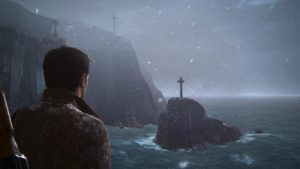 The game is slow going initially but the momentum picks up when the action moves to Scotland and, with all the pieces in place, it becomes a fantastic Uncharted experience. The Highlands are a new kind of location for the series but one that immediately lends itself to the gameplay, both new and old, and feels like updated yet classic Uncharted. The game goes on to introduce huge new mechanics that offer a different kind of Uncharted experience, but Scotland is the key formula of the franchise refined and perfected. The stealth, finally, after leaving much to be desired in games past, works beautifully and the gunplay is satisfying. The puzzles don’t match the quality of Uncharted 3 but they are still quite good, and the new rope and sliding mechanics feel like natural additions that aid the core gameplay.
The game is slow going initially but the momentum picks up when the action moves to Scotland and, with all the pieces in place, it becomes a fantastic Uncharted experience. The Highlands are a new kind of location for the series but one that immediately lends itself to the gameplay, both new and old, and feels like updated yet classic Uncharted. The game goes on to introduce huge new mechanics that offer a different kind of Uncharted experience, but Scotland is the key formula of the franchise refined and perfected. The stealth, finally, after leaving much to be desired in games past, works beautifully and the gunplay is satisfying. The puzzles don’t match the quality of Uncharted 3 but they are still quite good, and the new rope and sliding mechanics feel like natural additions that aid the core gameplay.
Scotland may be the peak of Uncharted 4’s classic style but Madagascar is the highlight of the game, expanding on what Uncharted can be. I never want Uncharted to be fully open world, and replaying all the games has cemented that fact, but the scale of Madagascar and the ability to explore just off the beaten path maintains enough of the key formula while adding more player choice for an individual experience. I, of course, try and do everything and end up driving rings around the map seeking every treasure, although still end up missing many, and the handling of the car is very good for what is only one fairly small part of the game. Except when it comes to the car chase that is, which is phenomenal if you can navigate the world without crashing into everything like me. You definitely need to practice and learn a path to do it smoothly. The rest of the chase is fantastic though and I would gladly play a two-hour version. The later boat section is also good but feels like a lesser version of the 4×4 with much less to explore.
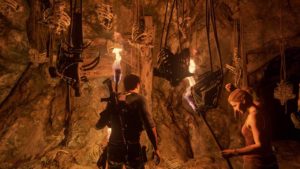 Unlike the previous games, Uncharted 4 actually lets the player explore the hidden city they have spent the whole game finding instead of it just being a mad rush in the final chapters. The location itself isn’t just a Macguffin but is important to the characters and themes at play. This reason is also why there is no supernatural aspect at play, which is understandable but a little frustrating. The pirate colonists need to have killed themselves for the theme of cyclical greed to work, as much as the joke about pirate ghosts amused me and genuinely made me wish they would appear. In place of any monsters, Naughty Dog instead gift us those damn exploding mummies. They are the absolute worst. Is it proximity that sets them off? Is it possible to not set them off or get far enough away? The fact I don’t know the answers to these questions after playing the game several times proves the mummies suck. The game is so good in every other aspect it makes this stick out even more. How did this make it to the end of development?
Unlike the previous games, Uncharted 4 actually lets the player explore the hidden city they have spent the whole game finding instead of it just being a mad rush in the final chapters. The location itself isn’t just a Macguffin but is important to the characters and themes at play. This reason is also why there is no supernatural aspect at play, which is understandable but a little frustrating. The pirate colonists need to have killed themselves for the theme of cyclical greed to work, as much as the joke about pirate ghosts amused me and genuinely made me wish they would appear. In place of any monsters, Naughty Dog instead gift us those damn exploding mummies. They are the absolute worst. Is it proximity that sets them off? Is it possible to not set them off or get far enough away? The fact I don’t know the answers to these questions after playing the game several times proves the mummies suck. The game is so good in every other aspect it makes this stick out even more. How did this make it to the end of development?
So far, I feel I’ve been somewhat negative about aspects of the story but, however clumsy the opening might be, it ultimately works because the emotional pay off to each story beat is near perfect. Once it was over, I looked back and realised I loved what the game was saying. Sam’s lie is devastating to hear, that he tricked Nate into coming on the mission but that he needed less of a push than he was willing to admit. It’s also perfect for this medium because we, the player, believe the lie because we played it. The following sequence with Nate and Elena is also executed perfectly. It feels similar to Drake’s Fortune but with them in a good car rather than that awful jet ski, and it was no doubt intentional to harken back to their first adventure together as they try and save their relationship. The part where everything but the music fades away and the two are left driving on a beautiful road together is divine. It also fails to fall into the Uncharted 3 trap of waiting until the very end of the game to have a much-needed conversation. Elena says “there’ll be time for this later” and Nate refuses and talks about his actions immediately.
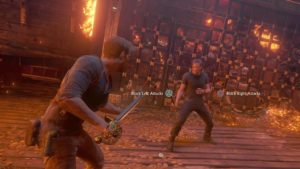 Another powerful moment is when Nate decides to give up on the treasure and just leaves. The chapter offers the biggest cast of characters in the whole game, with Nate, Sam, Elena, and Sully, but is also the quietest sequence in the game. No music, limited dialogue, just the weight of the decision and the game fully committing to it. Of course, Sam runs off and Nate has to save him but at least the motivation for Nate remains family, new and old, showing how much he has grown over the series while Sam has only begun to change and now occupies Nate’s old mindset. It’s a great conclusion other than the final boss fight, which is a disappointment. A sword fight between Rafe and Nate, just like the pirates they have been obsessed with, is a good idea but it’s a boring fight from a gameplay perspective. I also think the button mapping is wrong. To block a right attack, it should be the circle button, and for the left it should be square, not triangle. It messed with my brain.
Another powerful moment is when Nate decides to give up on the treasure and just leaves. The chapter offers the biggest cast of characters in the whole game, with Nate, Sam, Elena, and Sully, but is also the quietest sequence in the game. No music, limited dialogue, just the weight of the decision and the game fully committing to it. Of course, Sam runs off and Nate has to save him but at least the motivation for Nate remains family, new and old, showing how much he has grown over the series while Sam has only begun to change and now occupies Nate’s old mindset. It’s a great conclusion other than the final boss fight, which is a disappointment. A sword fight between Rafe and Nate, just like the pirates they have been obsessed with, is a good idea but it’s a boring fight from a gameplay perspective. I also think the button mapping is wrong. To block a right attack, it should be the circle button, and for the left it should be square, not triangle. It messed with my brain.
I’m conflicted on the ending where Sam snags some of the treasure and gifts it to Nate and Elena, letting them buy the salvage company and live a safe but still adventurous life. It feels like Naughty Dog want to have their cake and eat it too: Nate chooses Elena and family over gold but still gets it anyway. Although they do a good job navigating the treacherous ‘the girl was the real prize all along’ trope. And then the epilogue brings the story full circle in a scene that isn’t necessary but is quite nice. Nate and Elena’s daughter discovers her parents’ past adventures and the cycle that began with Nate’s mother continues. Not of greed but adventure. Uncharted 4 is an ending to the franchise but this scene could easily spin out into a continuation one day and what casting too! Nobody knew who Kaitlyn Dever was when then game was released, but playing it now, it was great to see such an accomplished actor as the new Drake.
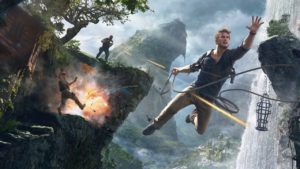 Uncharted 4 is fantastic but, upon revisiting it, it’s not perfect. Although, if I got anything out of the experience it’s that the game further highlighted the flaws of Uncharted 3, which now seems like a half measure in terms of character and story depth. Uncharted 4 fully commits to its narrative and themes and after a clumsy beginning takes the franchise to new storytelling and emotional heights, while undoubtably offering the best gameplay and graphics too. And yet, I return to my question from the start of the article: does it go too far and try to hard to make Uncharted something it is not? This is a very subjective question and while I think Uncharted 4 is the best game in the franchise, I don’t consider it the best Uncharted game in the franchise. A Thief’s End takes itself so very seriously and often forgets the fun and the pulp adventure serial aspects of the series. Uncharted 4 is on another level in almost every way but I still prefer Uncharted 2.
Uncharted 4 is fantastic but, upon revisiting it, it’s not perfect. Although, if I got anything out of the experience it’s that the game further highlighted the flaws of Uncharted 3, which now seems like a half measure in terms of character and story depth. Uncharted 4 fully commits to its narrative and themes and after a clumsy beginning takes the franchise to new storytelling and emotional heights, while undoubtably offering the best gameplay and graphics too. And yet, I return to my question from the start of the article: does it go too far and try to hard to make Uncharted something it is not? This is a very subjective question and while I think Uncharted 4 is the best game in the franchise, I don’t consider it the best Uncharted game in the franchise. A Thief’s End takes itself so very seriously and often forgets the fun and the pulp adventure serial aspects of the series. Uncharted 4 is on another level in almost every way but I still prefer Uncharted 2.
What are your thoughts on Uncharted 4: A Thief’s End? Let me know in the comments and be sure to geek out with me about TV, movies and video-games on Twitter @kylebrrtt.




